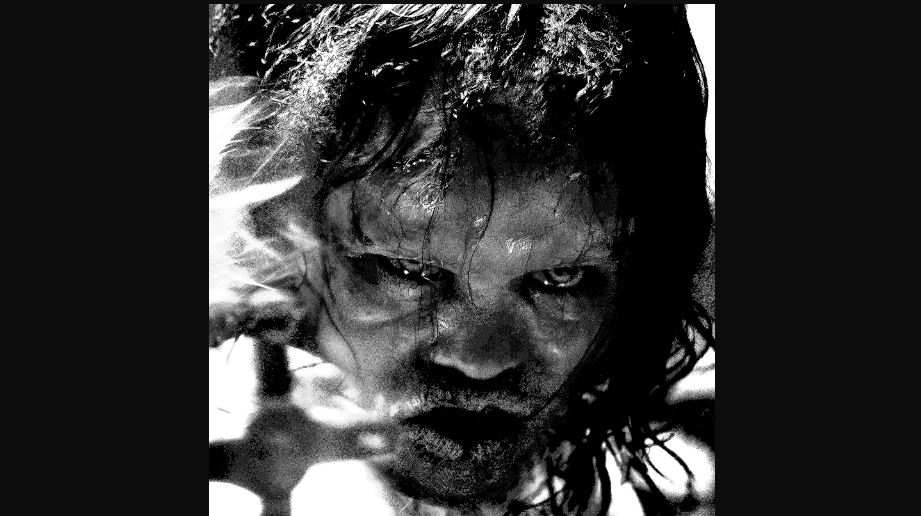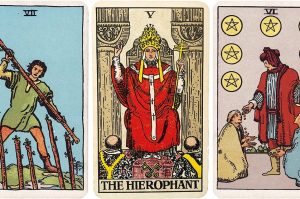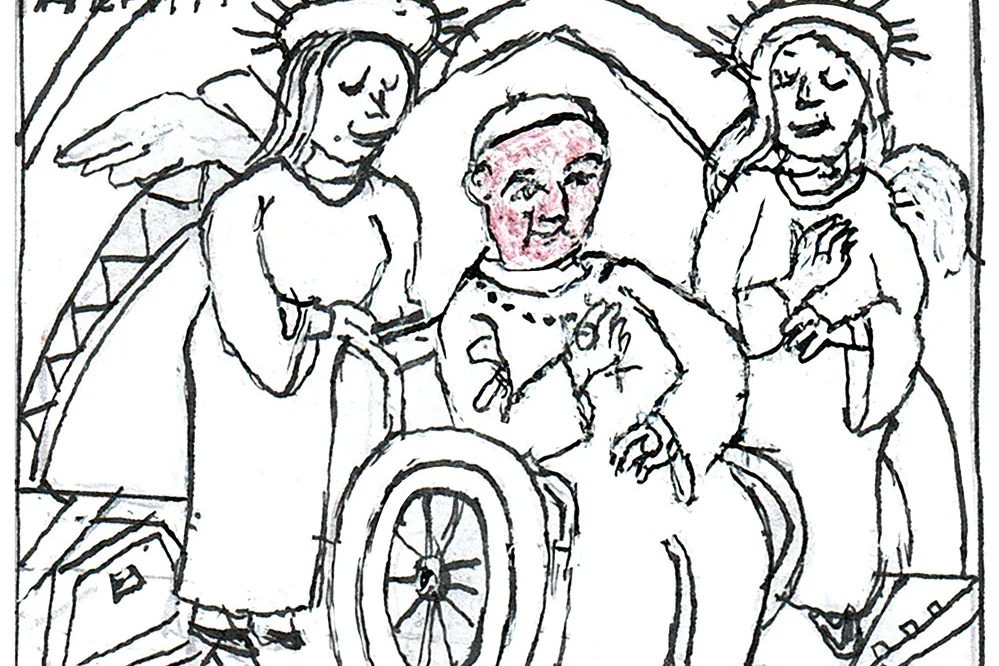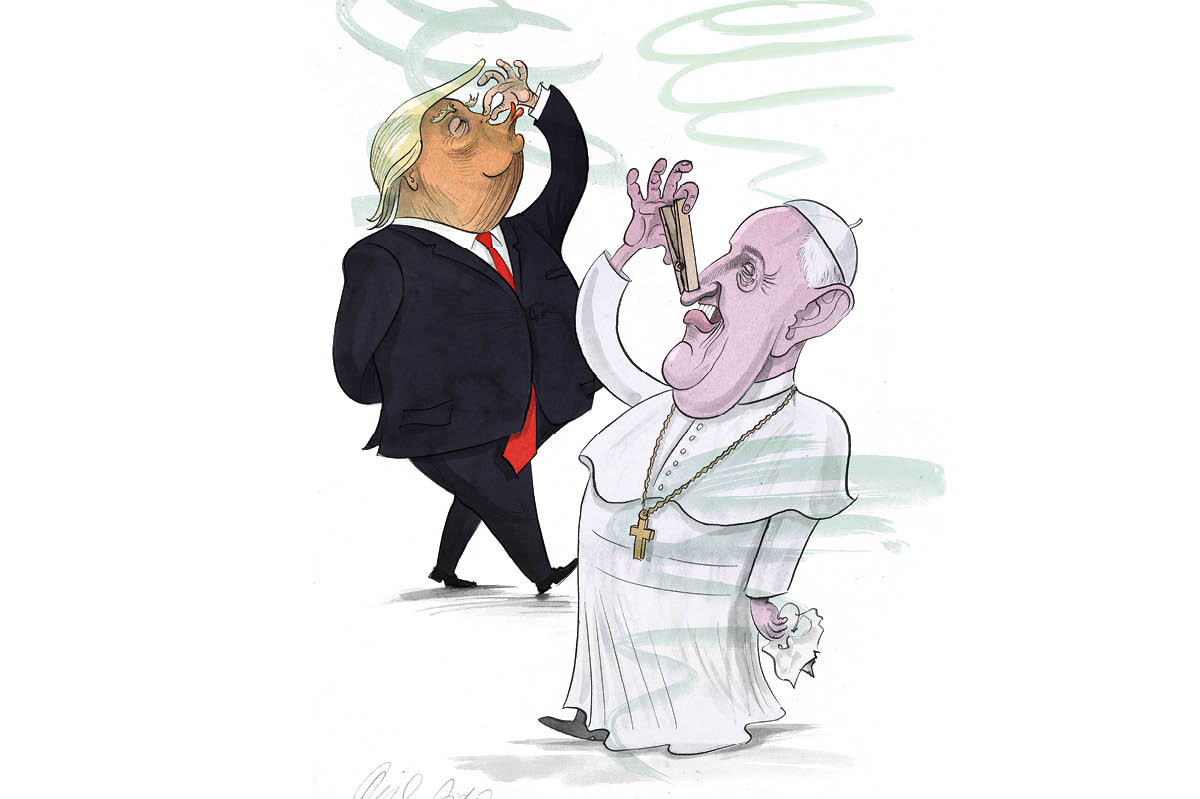One of the most anticipated films to hit theaters this October is The Exorcist: Believer, a direct sequel to one of the greatest horror movies of all time, The Exorcist, which is celebrating its fiftieth anniversary this year.
Coincidentally, the original film’s director, William Friedkin, passed away just a couple of months ago. In the wake of Friedkin’s death, Matthew Walther reexamined The Exorcist in a guest essay for the New York Times. He posited that the film hinges on the acknowledgment of supernatural evil and the use of longstanding Catholic theology and tradition in defeating it.
To the traditionalist Father Merrin who is called to perform the exorcism of the young girl in the movie, “The Devil is not a mere symbol of the possibility of evil that lurks in every human heart. The girl is actually possessed, and the Devil is an actual being,” Walther writes.
As you can imagine, some of the comments on the New York Times website in response to Walther’s piece were nasty. Subscribers bashed the Catholic Church as prejudiced and filled with hate, rejected the idea of exorcisms and demons as “patent nonsense” and dismissed religion outright as anti-science, man-made crap.
But there is a reason why The Exorcist still resonates today, even as Americans shift away from organized religion. The majority still believe in the existence of God, angels, Heaven, Hell and the Devil. Belief in the Devil has actually fallen at a slower rate than belief in God since 2001. And 82 percent of Americans still have some kind of spiritual belief system, even if they don’t describe themselves as religious, according to Gallup polling. I suspect that even people who have a hard time grappling with the existence of the demonic are equally skeptical of the idea that the evil and division prevalent in modern society are purely the work of bad people. Instinctively, we know that a true, supernatural evil exists.
The Exorcist sequel is hardly the only spiritually driven horror film to capture viewers this year. The Pope’s Exorcist stars Russell Crowe as Father Gabriel Amorth, an Italian Catholic priest who claimed to have performed tens of thousands of exorcisms on behalf of the Diocese of Rome before his death in 2016. The film used Father Amorth’s extensive documentation of his work to depict a fictionalized case that might have been representative of the evil he often faced on the job.
The Pope’s Exorcist is obviously a bit sensationalized, but seems to be one of the more accurate depictions of an exorcism in popular culture. In order to learn more about this ancient ritual, I recently picked up a copy of Monsignor Stephen Rossetti’s book Diary of an American Exorcist, which came out in 2021. Contrary to common misconception, exorcists don’t take most of the cases that are referred to them, instead often recognizing the problems people are experiencing as symptoms of mental illness and referring them to mental health specialists. Rossetti himself is a licensed psychologist and does not confuse psychological problems with demonic possession. Instead, he says, the signs of possession are unmistakable: the person displaying superhuman strength, speaking complete paragraphs in a language the person was never taught, knowledge of intimate secrets and sins regarding others, distortion of facial features and an intense aversion to holy objects and prayer.
In his book, Rossetti describes cases in which victims woke up with scratches of the beast down their back, suddenly developed the eyes of a snake and vomited white foam in response to prayer. He also corrects the idea that exorcisms are done in just one sitting. Instead, they take multiple sessions that usually last months or even years, depending on how aggressively the demon(s) have attached to the victim. Father Carlos Martins, who cohosts The Exorcist Files podcast, explains that the demons will often say they have a “right” to possess the victim because of whatever sin or other opening the person has provided to the world of evil.
Although people still mostly believe in the Devil, their rejection of religiosity in favor of “spirituality” often means that they are willing to dabble in the dark arts. A woman named Antonio Pagliarulo recently wrote for NBC News that she is one of a million-plus Americans that practice witchcraft.
“The precise number of witches in America is difficult to determine because many practitioners are solitary and, either by choice or circumstance, do not openly identify as such. But the growth is evident, especially to those who’ve made it their life’s work to study the community,” she wrote.
Ahead of the 2020 presidential election, multiple mainstream media websites wrote about a horde of witches who were collectively using their power to cast spells against President Donald Trump. This past winter, I traveled down to Chesapeake, Virginia, to report on a school board meeting where locals debated the presence of an After School Satan Club. Interestingly, one of the Satanic Temple-affiliated attendees popped up again at a Parents Matter event with Governor Glenn Youngkin in Virginia Beach this September.
Members of the political left have been particularly vocal in denouncing what they call the new “Satanic panic,” decrying so-called “book bans” on sexually explicit content in schools and parents rallying against Critical Race Theory and radical gender ideology. They’re naive to think there isn’t a consequence, though, to the careless attitude toward practices that usurp God like Ouija boards, witchcraft, paganism, astrology and, yes, the Satanic Temple, which claims not to worship the Devil but holds him up as some sort of harmless figure symbolizing freedom and rebellion.
Society’s hand wave to the dark arts is reflected in the rise of exorcisms being performed across the world. In Monsignor Rossetti’s book, he cites a fellow exorcist who guesses that a quarter of the American populace are oppressed or possessed by demons. A Newsweek article from 2022 noted that a survey of Italian exorcists found that the trained priests were overwhelmed by the number of cases they had to manage. In 2014, Pope Francis formally recognized the International Association of Exorcists, founded in part by Father Amorth in 1994.
“Priests are fielding more requests than ever for help with demonic possession, and a centuries-old practice is finding new footing in the modern world,” a feature in the Atlantic explained in 2018. “Though the Church does not keep official statistics, the exorcists I interviewed for this article attest to fielding more pleas for help every year.”
This reality has found a cultural home in the slate of horror movies hitting the big screen in the past few years. The Conjuring series, including a new sequel to The Nun, the highest grossing film in the franchise, is led by director and writer James Wan, who invites a priest in to bless his movie sets before filming. Also making waves in 2023 is Talk To Me, an Australian movie from the much-hyped studio A24 that explores the terrifying repercussions of communicating with the dead.
It might still be passé to believe that supernatural evil, Satan and Hell are real. Comments on a recent appearance of mine on the Hill’s Rising said I was crazy for suggesting extraterrestrials might actually be demons. Back in 2016, people mocked Richard Gallagher, a psychiatrist who works with exorcists to help them spot demonic possession, for explaining his beliefs in the Washington Post.
“Careful observation of the evidence presented to me in my career has led me to believe that certain extremely uncommon cases can be explained no other way,” he wrote.
People might delude themselves into thinking evil is something that merely comes from the hard hearts of men. But there’s a reason why horror films that explore the supernatural still scare: deep down, we know the truth about God and the Devil.

























